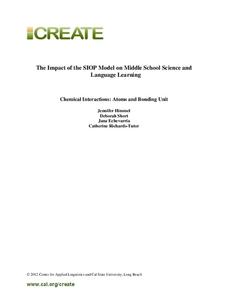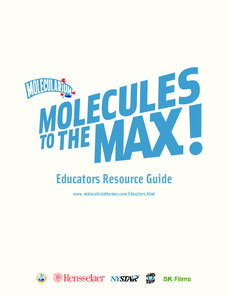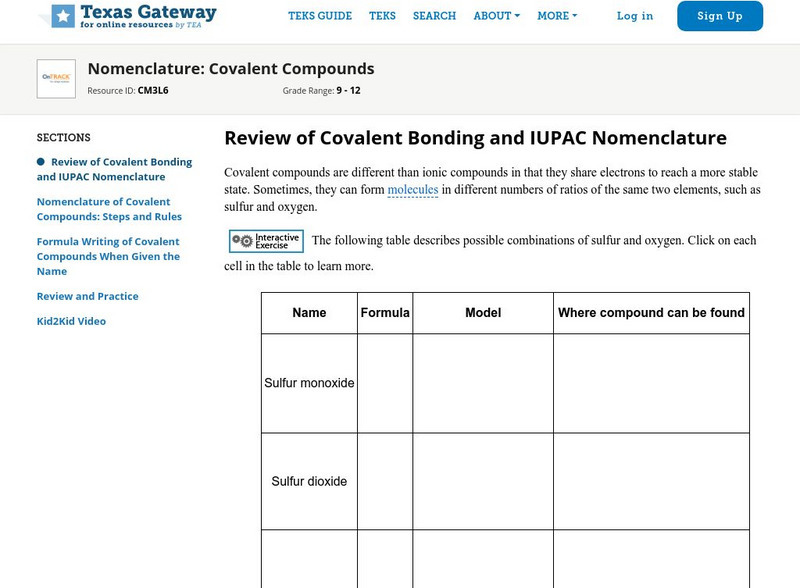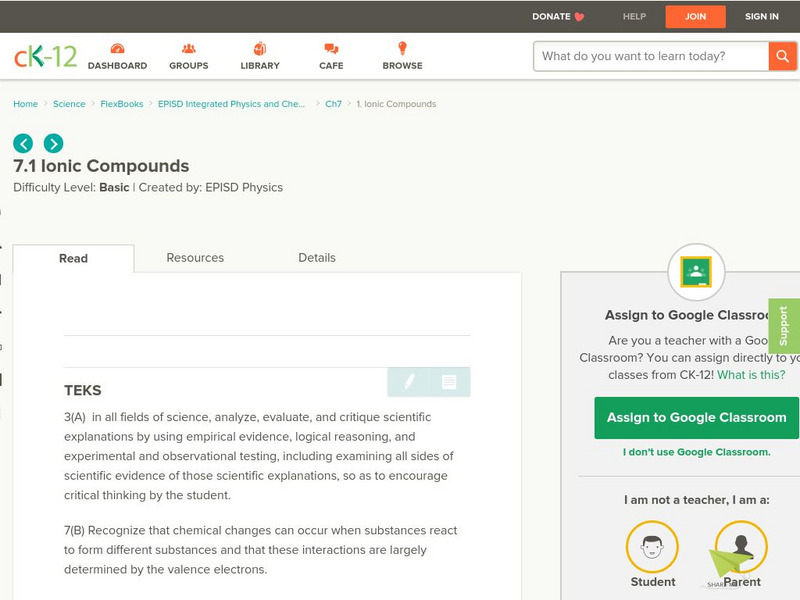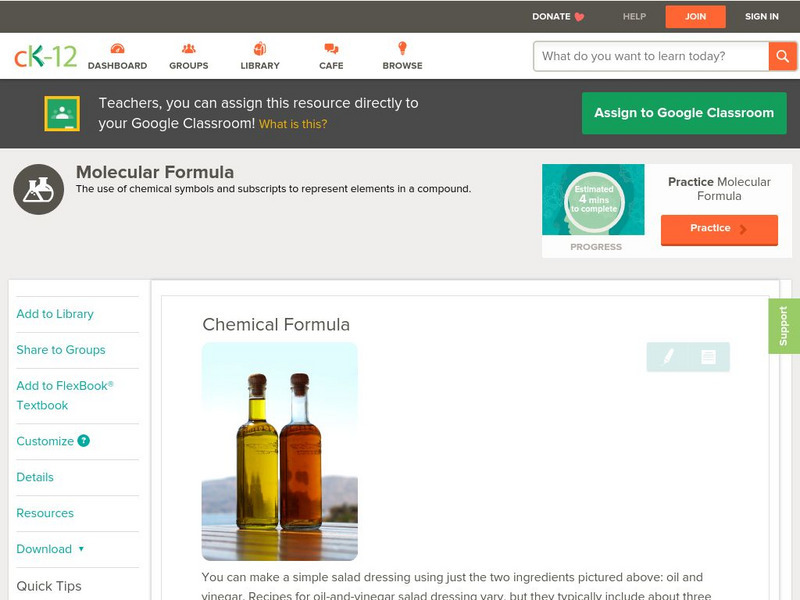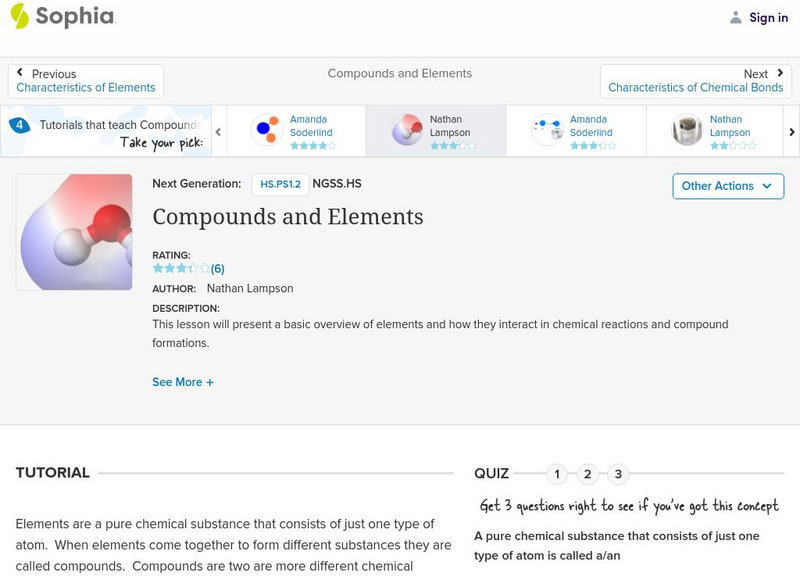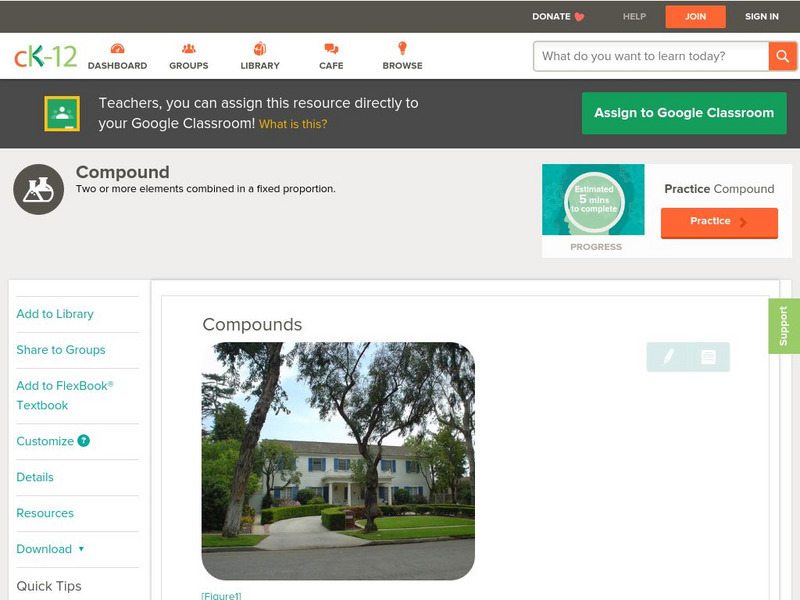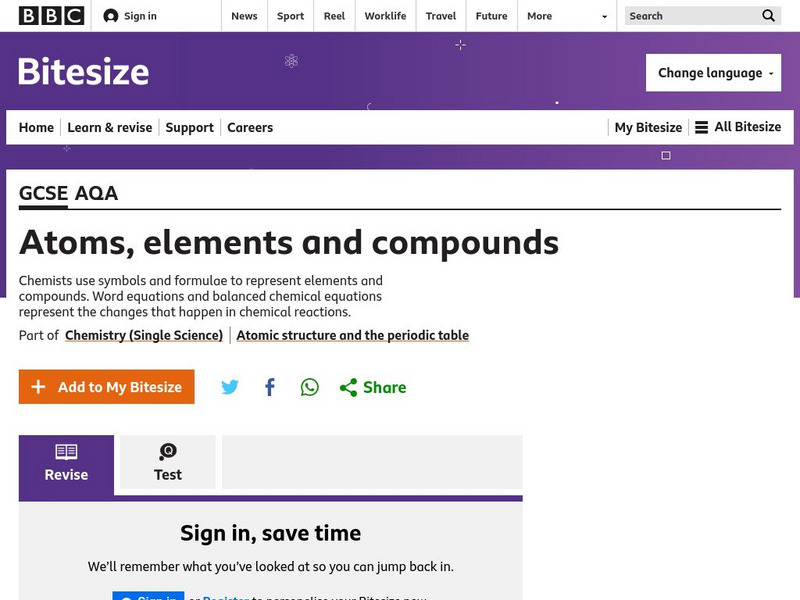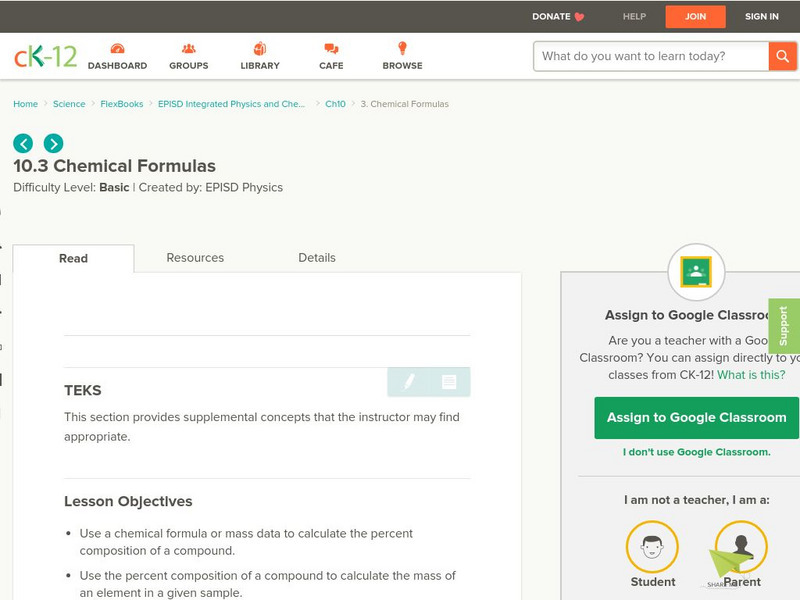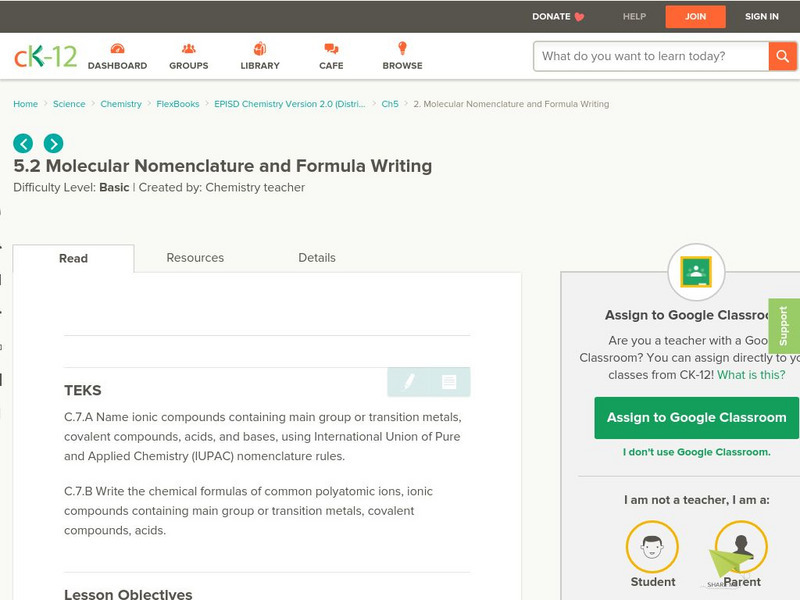Center for Applied Linguistics
Chemical Interactions: Atoms and Bonding
Watch budding chemists interact with the resource on chemical interactions. In the unit, six lessons provide an overview of basic chemistry, from understanding the development of atomic theory to distinguishing between ionic and covalent...
Department for Children, Schools and Families
Explaining Change Processes Using a Simple Particle Model of Matter
The more things change, the more they stay the same. This unit includes seven lessons starting with physical change and moving through to chemical change. Conservation of matter is explained clearly with multiple hands-on activities and...
Columbus City Schools
To Measure its Mass or Volume?
Atoms, elements, and molecules, oh my! Teaching the fundamentals of chemistry to curious sixth graders has never been easier to accomplish. Here is a resource that pulls together everything needed to get them off to a good start,...
Rensselaer Polytechnic Institute
Molecules to the Max!—Educators Resource Guide
From molecules to nanotubes, an engaging unit explores the world of tiny science. Fifteen hands-on experiments and lessons engage young scientists as they learn chemistry. Discussions, worksheets, and data analysis reinforce the concepts...
Chymist
Testing the Waters
Should you trust the water you drink every day? The hands-on activity has scholars test water from different sources for contaminants. Pupils perform chemical testing and make conclusions about pH, hardness, iron, chlorine, lead,...
OpenStax
Open Stax: Inorganic Compounds
Learn here about inorganic compounds, substances that do not contain both carbon and hydrogen, and how they are essential to human functioning.
CK-12 Foundation
Ck 12: Physical Science: Chemistry of Compounds
[Free Registration/Login may be required to access all resource tools.] Explores chemical compounds and how elements form different compounds.
Texas Education Agency
Texas Gateway: Nomenclature: Covalent Compounds
Given descriptions, diagrams, or scenarios, students will write and name the chemical formulas of binary covalent compounds.
Georgia Department of Education
Ga Virtual Learning: Physical Science: Bonding and Chemical Reactions
Through informational text, interactive puzzles, and review questions, students differentiate ionic and covalent bonds and identify the properties of each. They also use oxidation numbers to predict formulas of ionic compounds, name...
CK-12 Foundation
Ck 12: Ionic Compounds
[Free Registration/Login may be required to access all resource tools.] Students investigate ionic compounds, and learn how to write chemical formulas for them.
Georgia Department of Education
Ga Virtual Learning: Chemistry: Chemical Formulas and Equations
In this interactive module, students are introduced to the most fundamental part of chemistry: chemical reactions and the formulas that accompany them.
CK-12 Foundation
Ck 12: Physical Science: Chemical Formula
[Free Registration/Login may be required to access all resource tools.] How to write chemical formulae and what they represent about the substance.
Sophia Learning
Sophia: Compounds and Elements: Lesson 2
This lesson will present a basic overview of elements and how they interact in chemical reactions and compound formations. It is 2 of 4 in the series titled "Compounds and Elements."
CK-12 Foundation
Ck 12: Chemistry: Compounds
[Free Registration/Login may be required to access all resource tools.] Covers compounds and chemical change.
Sophia Learning
Sophia: Chemical Reactions: Lesson 4
This lesson will present a basic understanding of the periodic chart of elements and how to predict chemical reactions based on given information. It is 4 of 9 in the series titled "Chemical Reactions."
CK-12 Foundation
Ck 12: Life Science: Organic Compounds
[Free Registration/Login may be required to access all resource tools.] The main chemical components of living organisms are known as organic compounds and are built around the element carbon. Living things are made up of very large...
BBC
Bbc: Gcse Bitesize: Atoms, Elements and Compounds
This lesson focuses on atoms and elements including what they are, the chemical symbols for elements, and the placement of elements on the periodic table. A link to a test is provided.
CK-12 Foundation
Ck 12: Chemical Formulas
[Free Registration/Login may be required to access all resource tools.] Students will use a chemical formula or mass data to calculate the percent composition of a compound, and then calculate the empirical or molecular formula for a...
CK-12 Foundation
Ck 12: Molecular Compounds
[Free Registration/Login may be required to access all resource tools.] In the following online tutorial students will name ionic compounds containing main group or transition metals, covalent compounds, acids, and bases, using...
CK-12 Foundation
Ck 12: Ionic Compounds
[Free Registration/Login may be required to access all resource tools.] In the following online tutorial students will name ionic compounds containing main group or transition metals, covalent compounds, acids, and bases, using...
Scholastic
Scholastic: Study Jams! Science: Matter: Elements & Compounds
A video and a short quiz on elements, how they combine through chemical reactions to make compounds, and how to write the chemical formulas for water and salt.
Sophia Learning
Sophia: Compounds and Elements: Lesson 1
This lesson will present a basic overview of elements and how they interact in chemical reactions and compound formations. It is 1 of 4 in the series titled "Compounds and Elements."
Sophia Learning
Sophia: Ionic Compounds: Binary Compound Names With Transition Metals: Lesson 4
This lesson will demonstrate how to write a chemical formula for a binary ionic compound that includes a transition metal. It is 4 of 4 in the series titled "Ionic Compounds: Formulas from Binary Compound Names with Transition Metals."
BBC
Bbc: Gcse Bitesize: Organic Compounds
The alkanes, alkenes, alcohols and carboxylic acids are four different homologous series of organic compounds. Their different chemical properties are due to their characteristic functional groups. This lesson focuses on Alkanes...
Other popular searches
- Naming Chemical Compounds
- Chemical Compounds of Food
- Chemical Compounds in Cells
- Types of Chemical Compounds
- Atoms in Chemical Compounds
- Forming Chemical Compounds
- Chemical Compounds for Life
- Ionic Chemical Compounds
- Chemical Compounds and Bonds
- Chemical Compounds of Life
- Chemical Compounds Molecules
